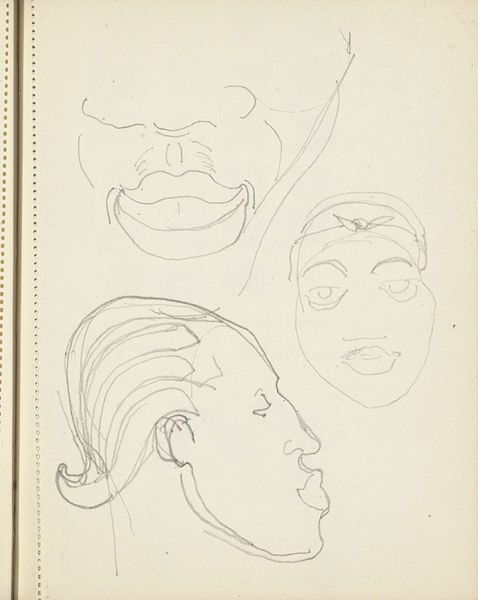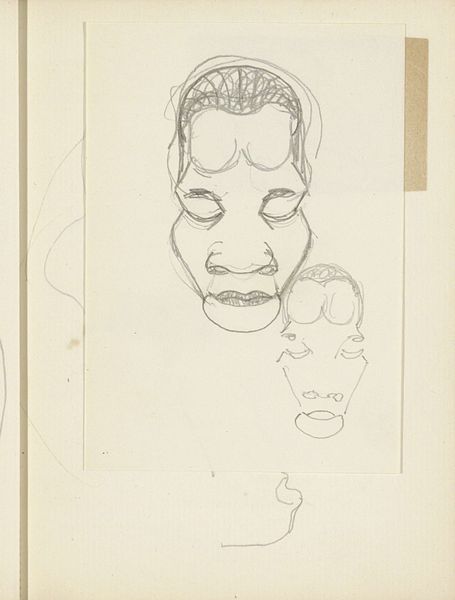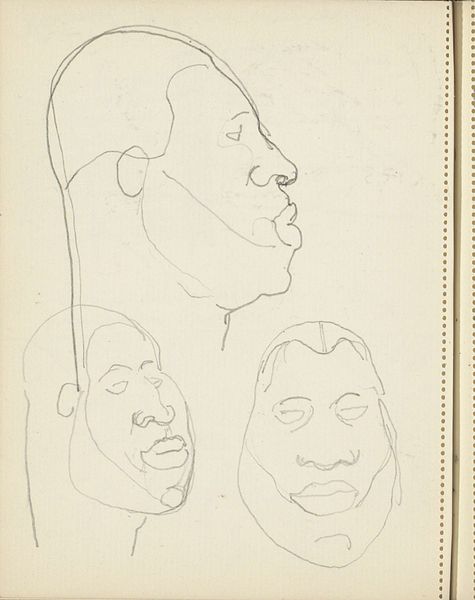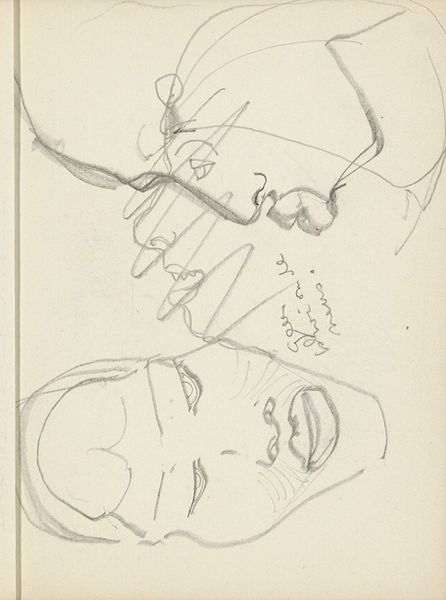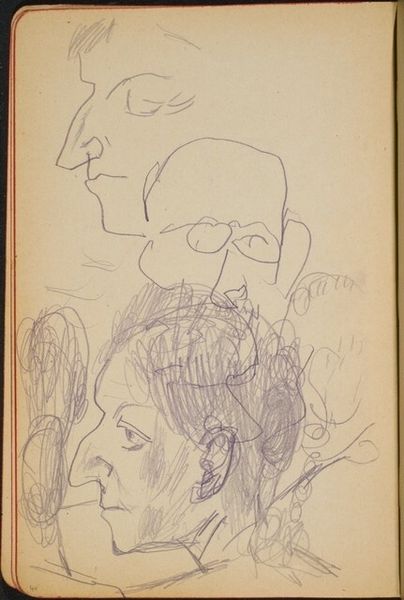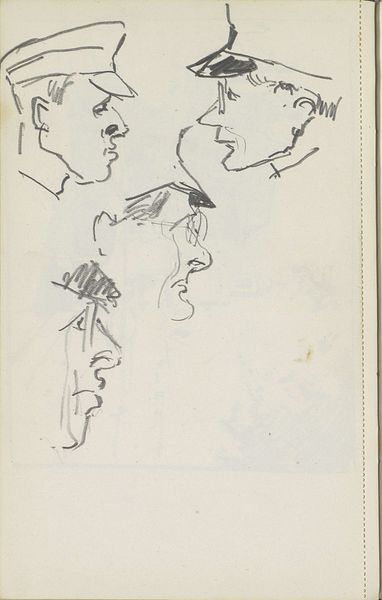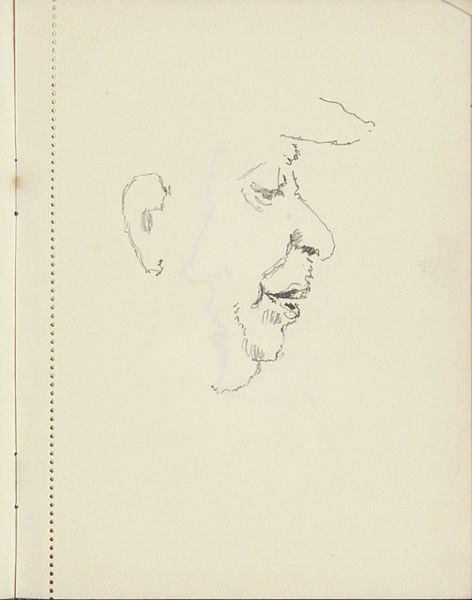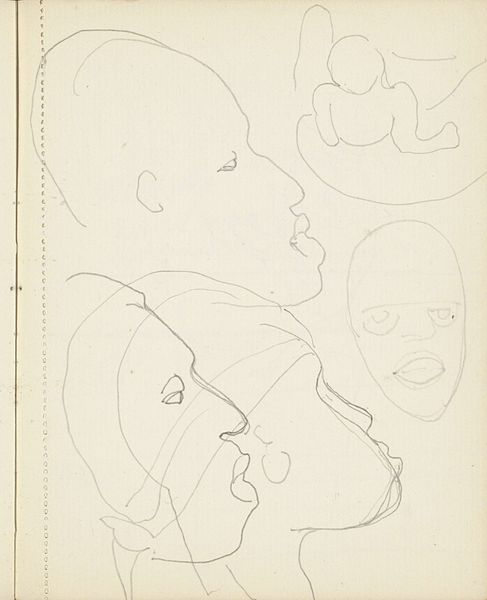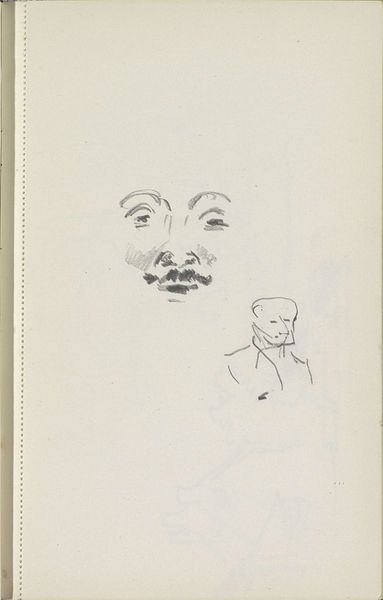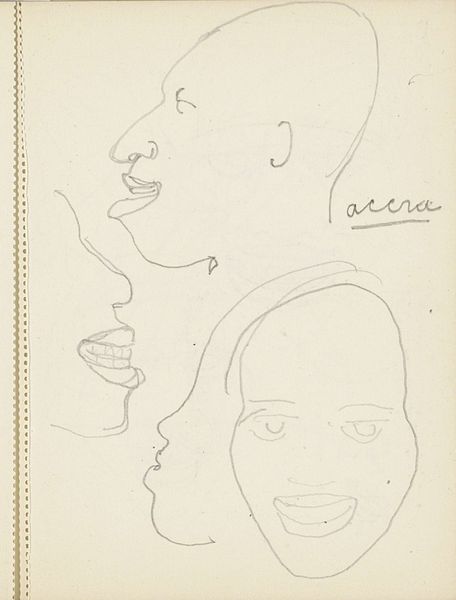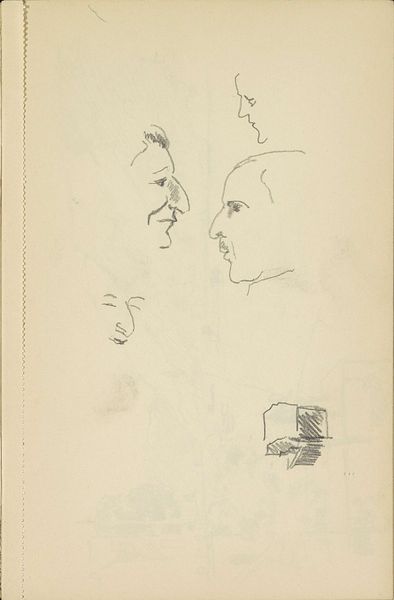
drawing, pencil
#
portrait
#
drawing
#
caricature
#
caricature
#
figuration
#
pencil
#
portrait drawing
Copyright: Rijks Museum: Open Domain
Editor: Here we have "Hoofden van de Hausa te Nigeria," or "Heads of the Hausa in Nigeria," a pencil drawing created sometime between 1916 and 1945, housed in the Rijksmuseum. The sketch-like quality makes me think of ethnographic studies, a quick capturing of facial features. What's your perspective on this work? Curator: This drawing presents a fascinating study of the artist's engagement with both representation and the colonial gaze. Note the specific medium—pencil, readily available and easily transportable. This speaks to the artist's means of production, and perhaps a reliance on inexpensive materials characteristic of on-site recording. Editor: So, the material itself informs the work’s purpose? Curator: Precisely. The hasty linework also reveals an interesting dynamic: these are studies, seemingly detached, but tied intrinsically to the history of ethnographic documentation. Who had the means to commission such work? What were the circumstances of the encounter between artist and subject? Editor: It almost feels like the drawing isn’t really about the Hausa people themselves, but more about the act of observing and documenting them. Curator: That’s right. Think about how the "heads" are decontextualized, reduced to studies of individual features. This kind of artistic project fed directly into the machinery of colonialism, categorizing and classifying people as objects of study. Even the detached, sketch-like quality reflects a certain distance and control exerted through the artistic process itself. The artist is the maker and documentarian and thus exerts the authority in deciding which details of his subject make it to the page. Editor: I hadn’t thought about it that way, seeing the actual process as tied to this history. Thanks, I'm going to look at drawings completely differently now. Curator: Indeed. By questioning the methods and circumstances behind a work’s creation, we can expose deeper connections between art, labor, and social power.
Comments
No comments
Be the first to comment and join the conversation on the ultimate creative platform.
